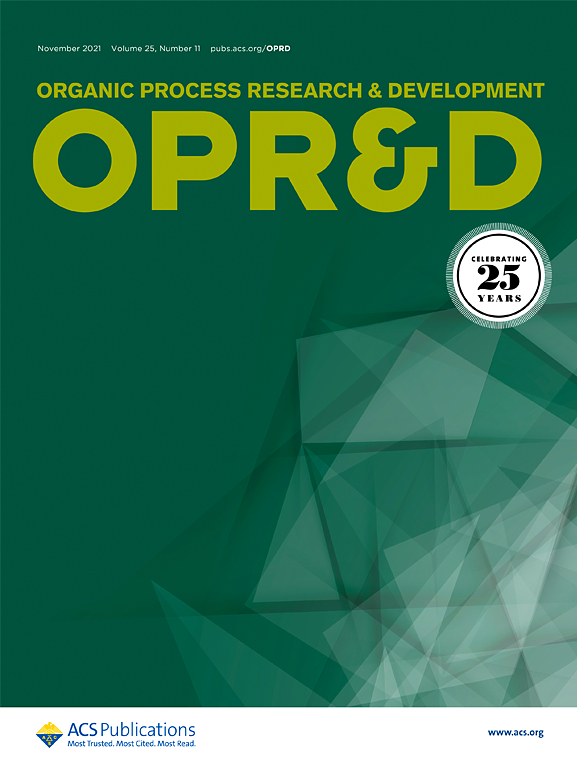三氟苄吡灵合成新工艺的开发及连续流动试验
IF 3.1
3区 化学
Q2 CHEMISTRY, APPLIED
引用次数: 0
摘要
三氟嘧啶(TFM)是一类新型介离子杀虫剂。本文通过亚胺化、还原性胺化和环化等步骤,提出了一种新的合成TFM的方法。基于甲苯作为通用溶剂和简化后处理操作,TFM可以在大约。反应时间为26 h,总分离率约为40%,e因子降低至158,提高了反应效率和生态友好性。随后,在连续流动中尝试合成路线,在32 min左右制备了TFM,总分离收率约为30%。此外,结合我们之前的研究,在连续流全合成的基础上,TFM也可以在不到35 min的总反应时间内得到,产率约为30%,与间歇式反应方式相比,总反应停留时间缩短了约48倍,在连续流下的反应效率优势明显。本文章由计算机程序翻译,如有差异,请以英文原文为准。

Development of a New Synthetic Process for Triflumezopyrim and Continuous Flow Attempts
Triflumezopyrim (TFM) is a novel class of mesoionic insecticides. Herein, a novel synthetic process for TFM was developed via imidization, reductive amination, and cyclization. Based on toluene as a universal solvent and simplifying postprocessing operations, TFM could be obtained in approx. 26 h with about 40% overall isolated yield, while the E-factor was decreased to 158, which improved the reaction efficiency and eco-friendliness. Subsequently, the synthetic route was attempted in continuous flow, and TFM was prepared in about 32 min with about 30% total isolated yield. Furthermore, by connecting to our previous research, TFM could also be obtained in less than 35 min total reaction time with about 30% yield based on continuous flow total synthesis, which shortened the total reaction residence time by about 48-fold compared to the batch mode and manifested a significant advantage of reaction efficiency in continuous flow.
求助全文
通过发布文献求助,成功后即可免费获取论文全文。
去求助
来源期刊
CiteScore
6.90
自引率
14.70%
发文量
251
审稿时长
2 months
期刊介绍:
The journal Organic Process Research & Development serves as a communication tool between industrial chemists and chemists working in universities and research institutes. As such, it reports original work from the broad field of industrial process chemistry but also presents academic results that are relevant, or potentially relevant, to industrial applications. Process chemistry is the science that enables the safe, environmentally benign and ultimately economical manufacturing of organic compounds that are required in larger amounts to help address the needs of society. Consequently, the Journal encompasses every aspect of organic chemistry, including all aspects of catalysis, synthetic methodology development and synthetic strategy exploration, but also includes aspects from analytical and solid-state chemistry and chemical engineering, such as work-up tools,process safety, or flow-chemistry. The goal of development and optimization of chemical reactions and processes is their transfer to a larger scale; original work describing such studies and the actual implementation on scale is highly relevant to the journal. However, studies on new developments from either industry, research institutes or academia that have not yet been demonstrated on scale, but where an industrial utility can be expected and where the study has addressed important prerequisites for a scale-up and has given confidence into the reliability and practicality of the chemistry, also serve the mission of OPR&D as a communication tool between the different contributors to the field.

 求助内容:
求助内容: 应助结果提醒方式:
应助结果提醒方式:


